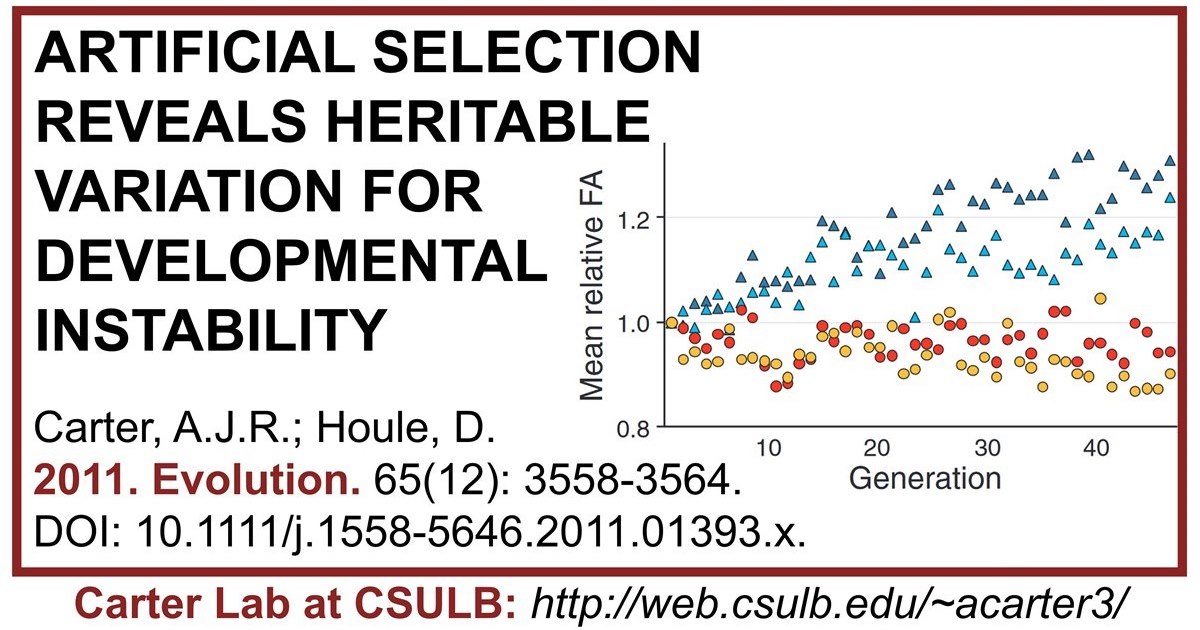ABSTRACT:
Fluctuating (nondirectional) asymmetry (FA) of bilaterally paired structures on a symmetrical organism is commonly used to assay the developmental instability (DI) caused by environmental or genetic factors. Although evidence for natural selection to reduce FA has been reported, evidence that FA (and by extension DI) is heritable is weak.We report the use of artificial selection to demonstrate heritable variation in the fluctuating asymmetry of interlandmark distanceswithin the wing in an outbred population of Drosophila melanogaster. Our estimates for the heritability of FA range from 0% to 1% and result in estimates for the heritability of DI as large as 20%, comparable to values typical for life-history traits. These values indicate the existence of evolutionarily relevant genetic variation for DI and the effectiveness of selection for reduced FA suggests that natural selection has not fixed all the genetic variants that would improve developmental stability in these populations.
